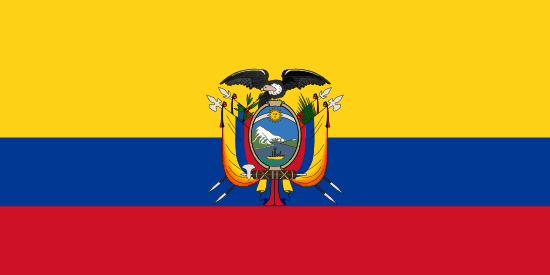"Quito Luz de América | Quito Light of America"
About:
Quito, the capital of Ecuador, was founded by the Quitu tribe in the first millennium. It was later incorporated into the Inca Empire in the 15th century. Spanish conquistadors established the city as San Francisco de Quito in 1534. Quito gained independence from Spain in 1822, joining Simon Bolivar's Gran Colombia. It became the capital of Ecuador when the country separated in 1830. Today, Quito is a UNESCO World Heritage Site, renowned for its preserved historic center.
When to visit:
Quito, the capital of Ecuador, experiences a mild and cool climate throughout the year due to its high elevation. The best time to visit Quito on a holiday is during the dry season, which typically runs from June to September. During this time, you can expect clear skies and comfortable temperatures, making it ideal for exploring the city and its surrounding attractions. However, keep in mind that Quito's weather can be unpredictable, so it's always a good idea to pack layers and be prepared for sudden changes.
When to avoid:
The worst time to travel to Quito, Ecuador on a holiday is during the rainy season, which typically occurs from October to May. Heavy rainfall and overcast skies can dampen outdoor activities and limit visibility of the city's stunning landscapes. Additionally, the increased precipitation during this time can lead to potential travel disruptions such as road closures and flight delays. Travelers seeking to explore Quito's vibrant culture and natural beauty may find it more challenging to do so during the rainy season.
"Wet Season (Oct-May)"
In Quito, the wettest season runs from October to May. Average temperatures hover around 15°C (59°F), with daily highs reaching 20°C (68°F). Rainfall is significant, with monthly averages of 120-170mm. Despite the rain, there's still a fair amount of sunlight, with 6-7 hours per day. Cloud cover is common, often resulting in overcast skies. An average day for a visitor during this season involves mornings of sunshine, followed by afternoon showers, so carrying an umbrella or rain jacket is advisable. The evenings are cool, perfect for cozy indoor activities.
"Quito Warm Season"
In Quito, Ecuador, the warmest part of the year is typically from June to September. During this time, the average high temperatures range from 66 to 70°F (19 to 21°C) and the lows range from 50 to 55°F (10 to 13°C). Despite being the warmest time of the year, it's also the driest with an average rainfall of about 40-50 mm per month.
The city enjoys a good amount of sunlight during these months, with an average of 6-7 hours of sunshine per day. The humidity is relatively low, averaging around 70-75%, which makes the heat more bearable. Cloudiness varies, but it's generally partly cloudy, with more cloud cover in the mornings and clearer skies in the afternoons.
For a visitor, a typical day in Quito during this season would feel pleasantly warm without being too hot. The mornings might start off a bit cloudy and cool, but the skies usually clear up by the afternoon, leading to bright, sunny afternoons. Despite the warmth, the relatively low humidity keeps the climate comfortable. Evenings can be cooler, so it's advisable to carry a light jacket. The low rainfall also means outdoor activities and sightseeing are less likely to be disrupted by rain.
Language:
In Quito, the capital city of Ecuador, the most commonly spoken language is Spanish, as it is the official language of the country. However, there are also significant numbers of people who speak indigenous languages, most notably Kichwa, the language of the Quechua people. English is also spoken among the educated classes and in the tourism industry.




